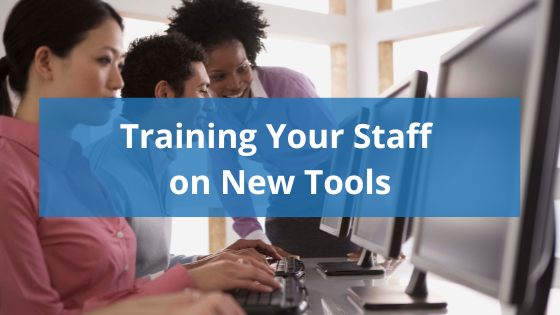While using outdated technology or tools that no longer meet your needs is a bad idea, many organizations don't think about the training needed when new tools are brought in. While many people are comfortable with the basics of business technology, like using email, IM, or various productivity tools, it would be a mistake to think they could adapt to any new tool. We've gathered a few things for you to consider when changing systems, technology, or software at your organization.
Planning for the rollout
Deciding to use new technology can be a stressful process. It often involves getting buy-in from multiple leaders within your organization and can take hours of research, demos, and meetings to finalize. Once that process is over, it can be very tempting to just decide on a start date, send an announcement, and assume your staff will figure it out.
A better plan, however, involves thoughtful consideration of your employees' needs, potential hurdles, and timing. When you officially announce the change, make sure you highlight all relevant information including: who will be impacted, your expected timeline, any relevant links or information that could help your staff prepare, and a clear plan for training and adoption. This will give your team time to prepare and gather any questions they may have.
Preparing trainers
You can choose various people to train your staff on new systems, including internal team members or your external partners. These people should be fully prepared to answer user questions, have a strong understanding of the tool, and be enthusiastic about the change. An underprepared trainer can lead to your users misunderstanding the new tool or system you are setting up, which can cause additional issues down the line.
Choosing your training format
There are many different ways to set up a training for your staff, and it may seem like the easiest thing to do is to throw them in a conference room with a speaker and presentation. This may not be the best option, since it can be difficult to learn that way. You may want to consider more interactive, hands-on training methods. These could include interactive demos in small groups, short video content, or open sessions for users to bring questions and get help. Whatever training method you choose, make sure you leave room for your employees to get additional help or resources as needed.
Choosing, implementing, and deploying new tools or processes can be more difficult than anticipated. Your IT partners can help you navigate this process and work with your staff if they run into issues or have questions down the line. If you need help updating your systems or processes feel free to contact us.








Leave a Reply